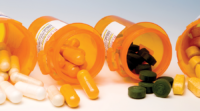Discounting can benefit your business in a few significant ways, according to Kirk Jackisch, president of Pricing Solutions Ltd, a boutique consulting firm focused exclusively on the pricing space. Discounting can attract new customers, increase visits, and increase purchases per visit. At the end of the day, you may lose margin on some items, but overall, you make gains to your bottom line.
But discounting is a double-edged sword. If done poorly, Jackisch said, “you’re essentially just giving margin away.” Because it’s such a delicate endeavor, discounting requires planning, along with some analytics, which is why many businesses seek outside assistance with their pricing decisions. But for those who do pricing and promotions in-house, Jackisch offers seven tried-and-true discounting tips he’s learned over his 25 years in the pricing industry.
1. Focus on “in and outs”
In and outs are items with a temporary shelf duration, typically seasonal or holiday products that come and go quickly. Think egg baskets and hand warmers. Christmas cards and back-to-school supplies. These items increase the spend of existing customers, bring in new customers, or bring in current customers more frequently. You can keep your full margins on the rest of your front end because these items will do the promotional legwork. Consider making the discount contingent on a separate purchase, such as buy one item get another half off.
2. Bundle your deals
Bundling more than one item into a deal allows you to increase spend by selling an extra item the customer wouldn’t otherwise have purchased. Put items together that have high associations, and make at least one of them a high-margin product. Buy a beverage and get 20 percent off a chocolate bar, for example. Target items with high price sensitivity because those are likely to get you enough volume to offset the discount.
3. Promote during fallow times
Have you noticed movie theaters offering BOGO tickets on Tuesdays? The purpose is to get people to show up on those nights when the theaters normally sit empty. A discount carries no loss risk because the theater isn’t earning business anyway. Are there times of the day, week, month, or year where you suffer a drought of traffic or have drops in demand for specific categories? Consider saving your promotions for those fallow periods to get people flowing through your aisles.
Editor’s picks
5 Lucrative Ways to Monetize Your Pharmacy
How One Pharmacy Saves Thousands on Its Cost of Goods
This Technology Reduces Pharmacy Will Call Time From Minutes to Seconds
4. Use your loyalty program
Offering exclusive discounts to customers in your loyalty program encourages people to sign up for the program. You get valuable data that in the end helps you bring those customers in more frequently or increase their basket size when they visit in the store. When you can see all of their purchases, including when they are making them, you can better structure your promotions around that person to more effectively persuade them to spend more or visit more frequently.
5. Keep in mind price point endings and thresholds
There are price thresholds that consumers are sensitive to. The most common one is the 99-cent threshold. In some spaces, an increase from $9.99 to $10.01 results in a 15 percent reduction in demand. People see ten dollars versus nine dollars. Then there are price point endings. For example, there’s no impact on demand from $0.93 to $0.99. Utilizing some of those key thresholds, especially for products people purchase a lot of and the price is well known, will drive profits. For example, if you have a product that’s at $5.39 and you get it down to $4.99, you’re going to have a much bigger kick than if you take it down to $5.09. And taking it down to $4.79 isn’t going to get you any more positive impact than $4.99.
6. Use addition over subtraction
Adding value is always preferable to providing a cash discount. A customer is indifferent to getting two dollars off versus getting something worth two dollars more. But for you, it makes a difference. The cost of the two-dollar discount is two dollars, while the cost of the two-dollar add is likely a dollar—or for a high-margin product, 50 cents. So instead of giving away two dollars, you give away 50 cents and the value to the customer is the same.
7. Don’t forget your total value
Value-based pricing takes into account your pharmacy’s total value proposition to the customer, which includes a host of factors that make up a customer’s experience of your pharmacy: location, parking, product selection, customer service, checkout experience, layout, and so on. To truly know what promotions will make you better off economically, you have to price relative to your value proposition. The more value you offer, compared to your competitors, the less your prices matter. The less value you offer, the more they matter.
An Independently Owned Organization Serving Independent Pharmacies
PBA Health is dedicated to helping independent pharmacies reach their full potential on the buy side of their business. The member-owned company serves independent pharmacies with group purchasing services, expert contract negotiations, proprietary purchasing tools, distribution services, and more.
An HDA member, PBA Health operates its own NABP-accredited (formerly VAWD) warehouse with more than 6,000 SKUs, including brands, generics, narcotics CII-CV, cold-storage products, and over-the-counter (OTC) products.
Want more pharmacy business tips and advice? Sign up for our e-newsletter.














